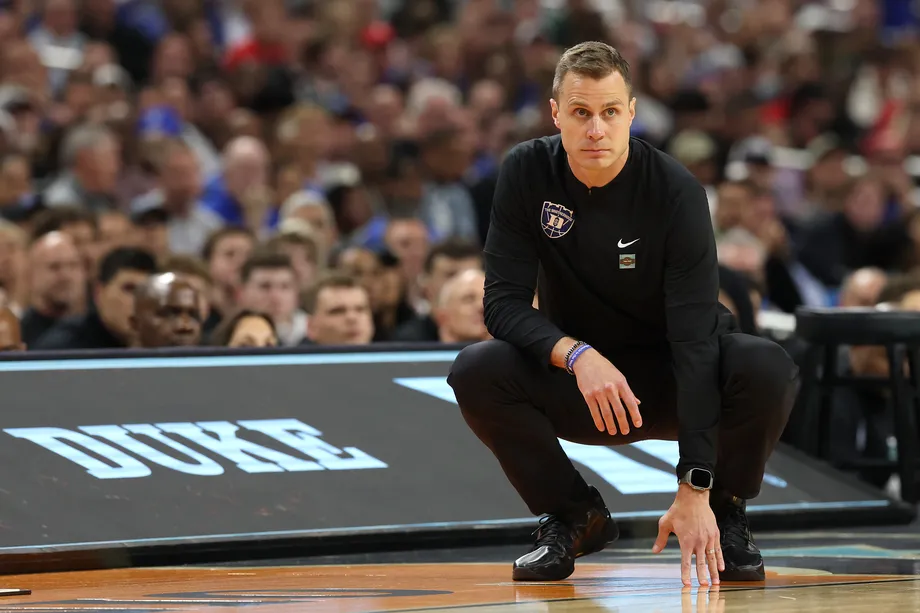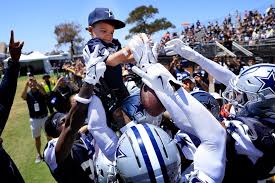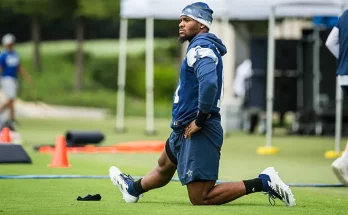Duke University’s men’s basketball team has long been a powerhouse in the world of college basketball. With a storied history of national championships, countless NBA players, and a legacy built on relentless competition and success, the Blue Devils have always been a program under a microscope. Yet, this season presents an intriguing and monumental challenge for Duke, particularly for head coach Jon Scheyer. Following in the footsteps of the legendary Mike Krzyzewski, Scheyer’s first few years at the helm have been marked by promise, growth, and the expectations that come with leading a program of Duke’s stature. However, this upcoming season may prove to be his greatest test yet, with a host of unique challenges that could define the trajectory of his tenure as the program’s head coach.
Jon Scheyer took over Duke’s basketball program in 2022, succeeding Coach K, who had built a dynasty over 40 years. The pressure was immediate, as Duke is not just any program; it’s a team with an overwhelming legacy and fanbase that expects nothing less than excellence. The transition from a coaching legend to a new leader is rarely smooth, and Scheyer quickly realized that his job would involve more than just implementing his strategies on the court. He had to manage the weight of history while navigating a modern landscape where the game has changed in fundamental ways.
As Scheyer enters his third season as head coach, his biggest challenge lies in proving that he can sustain the Blue Devils’ elite status, while adapting to the evolving world of college basketball. The landscape has shifted dramatically since Coach K’s heyday. NIL (Name, Image, Likeness) deals, the transfer portal, and the rise of one-and-done players have all transformed the game. Scheyer must navigate these changes while maintaining Duke’s commitment to developing talent, both on and off the court. The program’s success was always rooted in not just recruiting the best players but fostering an environment where those players could grow, both as athletes and as individuals.
One of the most significant hurdles Scheyer faces this season is the growing influence of NIL. As college basketball has become a more lucrative enterprise, players are increasingly tempted by the financial opportunities available through sponsorships and endorsements. Duke has historically been able to recruit elite players because of its reputation, facilities, and national prominence, but the financial aspect has added a new layer to the recruitment process. Duke will have to compete with other schools that have deep pockets and more aggressive NIL programs. Scheyer’s ability to manage this new reality—balancing competitive recruiting with maintaining the program’s integrity and values—will be critical.
Furthermore, the rise of the transfer portal presents another major challenge for Scheyer. While the portal provides opportunities to bring in talented players who can immediately contribute, it also creates an environment where stability is harder to achieve. Historically, Duke built its success on developing players over the course of several years, creating a cohesive and tight-knit team. Now, the reality is that many of the top programs are built on a combination of high school recruits and transfers who can help fill gaps right away. Scheyer will need to find a balance between bringing in experienced transfers and maintaining the core culture of the program.
The on-court challenges are no less daunting. Duke enters this season with a roster that includes some of the most highly touted players in the country, but they are still incredibly young. The influx of one-and-done players—especially after the NBA’s draft age rule changed—means that many top programs, including Duke, are constantly dealing with a roster turnover that is unprecedented in the history of college basketball. Scheyer must now manage a roster where freshmen and sophomores are expected to contribute immediately, with little to no experience at the college level. The challenge is not just about recruiting top talent but also developing that talent in a very short time frame.
In addition to managing player development, Scheyer must maintain a system that thrives under pressure. Duke basketball has always been about more than just talent—it’s been about execution, discipline, and mental toughness. The Blue Devils have always had players who could execute in clutch situations, whether that’s hitting a game-winning shot or locking down on defense during crucial moments. The challenge for Scheyer will be to maintain these traits in a landscape where the game is faster, and the stakes seem even higher with the rise of national media attention, NIL, and the ever-looming possibility of early departures to the NBA.
Duke also faces a unique challenge within its own conference, the ACC. For years, the ACC was the premier conference in college basketball, but now, the league’s dominance is being questioned. Schools like North Carolina, Virginia, and Syracuse are all still formidable opponents, but there’s been a shift in power. Other conferences, particularly the SEC and Big 12, have raised the level of competition in recent years. The ACC’s struggles to keep pace with these leagues present a challenge for Duke, as it has to navigate the conference schedule while competing for a top seeding in the NCAA Tournament. In addition, there are schools within the ACC that are quickly improving, and their rivalry games against Duke are always intense. The stakes are incredibly high every time the Blue Devils face off against an ACC opponent, and Scheyer’s ability to manage those high-pressure situations will be crucial.
Compounding the on-court challenges is the increased scrutiny Scheyer will face as Duke’s head coach. Mike Krzyzewski built his reputation not only as a master tactician but also as a leader who could handle the intense media attention and public pressure. Scheyer’s every move will be under a microscope, especially as he attempts to carve out his own identity while also honoring Coach K’s legacy. Duke fans are passionate, and the media often turns up the heat when things aren’t going as planned. While Scheyer has shown great promise in his early years, this season will likely serve as a defining moment in his career. Can he build on Duke’s storied past while forging his own path forward, or will the weight of expectations prove too much?
There’s also the question of how Scheyer will build a cohesive team in an era when individual players are often focused on their personal brand as much as, if not more than, team success. Maintaining unity within a locker room filled with highly talented and high-profile players who are constantly being courted by agents and sponsors presents a unique challenge. The culture of “team first” that Krzyzewski established was built on trust, selflessness, and sacrifice. Scheyer must continue to foster this culture, even as external pressures grow. The challenge will be keeping the team united and focused on the ultimate goal: winning championships.
Duke has always been a program that demands success. The Blue Devils are expected to compete for championships year in and year out, and any season that doesn’t meet those expectations is viewed as a disappointment. For Scheyer, this season represents his chance to prove that he is not only capable of upholding that standard but also of redefining the program for the modern era. He is facing his biggest challenge yet—balancing Duke’s rich legacy with the new realities of college basketball while managing the expectations of a fanbase that demands greatness.
There is no doubt that Jon Scheyer has the talent, drive, and basketball IQ to lead Duke to success. However, the question remains: can he do it in the face of so many challenges? This season will go a long way in determining his future at the helm of Duke basketball and whether he can carve out his own legacy while preserving the Blue Devils’ reputation as one of the premier programs in college basketball.



